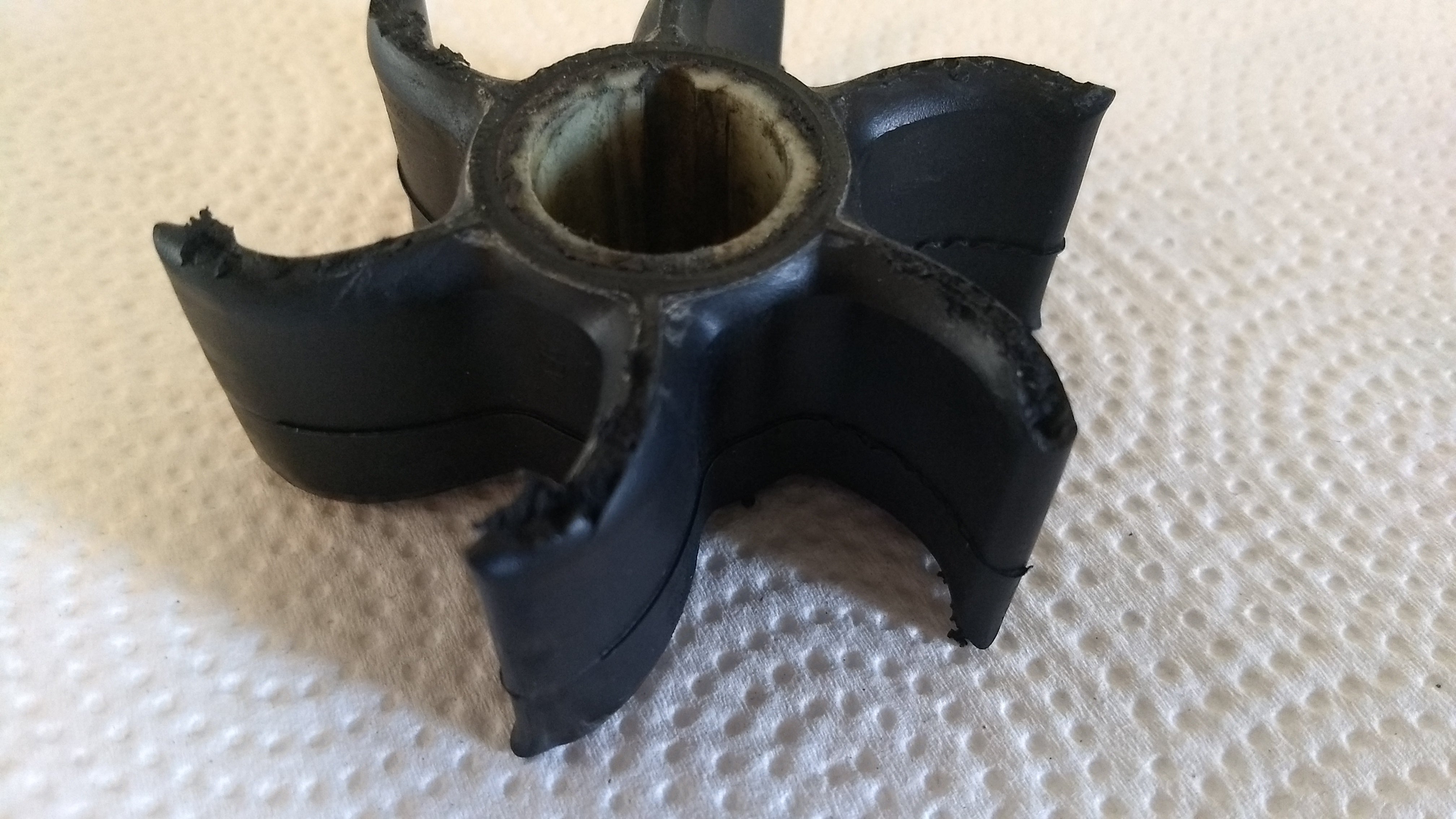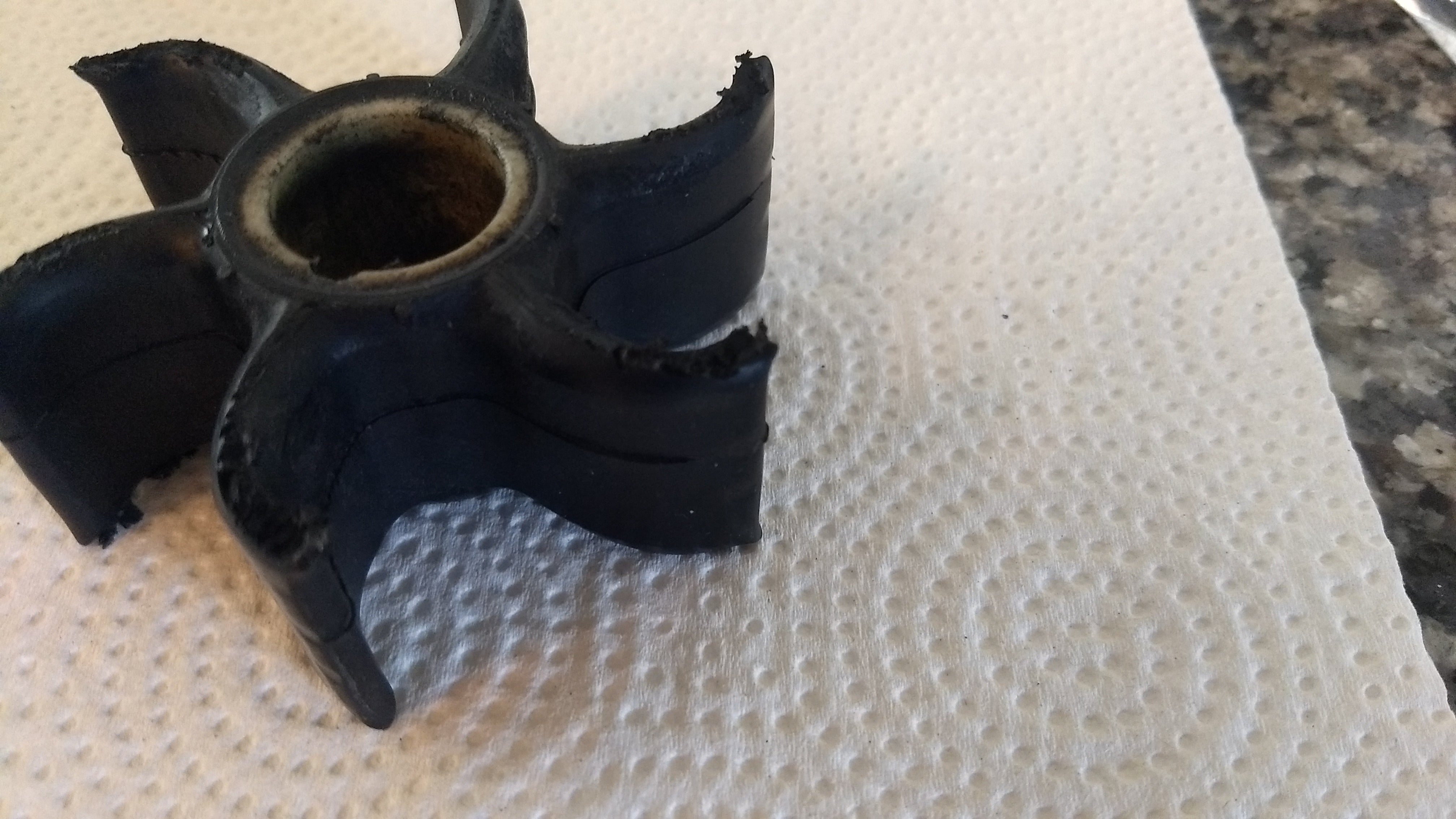 "Future next gen S2000 owner" (future-next-gen-s2000-owner)
"Future next gen S2000 owner" (future-next-gen-s2000-owner)
08/05/2020 at 14:35 ē Filed to: Maintenance
 1
1
 17
17
 "Future next gen S2000 owner" (future-next-gen-s2000-owner)
"Future next gen S2000 owner" (future-next-gen-s2000-owner)
08/05/2020 at 14:35 ē Filed to: Maintenance |  1 1
|  17 17 |
During to a series of unfortunate events, I now have my mornings ďfreeĒ. In so much that I can watch the kiddoís and get some wrenching done. Off to some boating websites and 400 dollars later I have the necessary supplies to rebuild the carbs and replace the reeds - I hope this cures the hard starting issue. I purchased a water impeller rebuild kit for my boat a while ago and had been meaning to do it since who knows when it was done last.
Anyway, the boat really runs pretty well but everything I rebuild/replace is generally neglected by most owners as they donít change/replace something unless it fails. Thatís not really my style. Iíd like to prevent my engine from overheating so Iím not stranded on the lake.
Anywho, back to the moral of the story. Preventative maintenance is a good thing. The water pump was beyond itís useful life and the edges where starting to come apart.
Do your maintenance Oppo.


If youíve made it this far, is it bad to run a carb jetted for 5,000 ft at sea level for a couple days? Will I lean out the motor? Do I need to rejet for a weekend trip?
 Sovande
> Future next gen S2000 owner
Sovande
> Future next gen S2000 owner
08/05/2020 at 14:46 |
|
It sucks when they break up and you have to spend an hour stan ding on your head in the engine box picking the pieces out of the water cooler with a dental pick.
Or so Iíve heard.
 Future next gen S2000 owner
> Sovande
Future next gen S2000 owner
> Sovande
08/05/2020 at 14:48 |
|
I canít imagine how terrible that would be. Donít forget to super glue it back together to make sure you got every piece.
 ITA97, now with more Jag @ opposite-lock.com
> Future next gen S2000 owner
ITA97, now with more Jag @ opposite-lock.com
> Future next gen S2000 owner
08/05/2020 at 14:49 |
|
I'd plan on rejetting for sea level.† It'll probably start as is, but it likely won't run well being really lean.† Being significantly lean and running under lots of load (which basically all a boat doesn't past trolling speed) is also a recipe for bad internal engines thing to happen.††
 Sovande
> Future next gen S2000 owner
Sovande
> Future next gen S2000 owner
08/05/2020 at 14:51 |
|
Last time I had one go I was stuck on the water with a new one in the box at the dock. Which, in hin dsight, was a dumb place to keep it. I had to get towed in like a common idiot.
 Future next gen S2000 owner
> ITA97, now with more Jag @ opposite-lock.com
Future next gen S2000 owner
> ITA97, now with more Jag @ opposite-lock.com
08/05/2020 at 15:00 |
|
Iíve been doing research on it and I canít really seem to find a definitive answer. I also donít know what jets would be from the factory at sea level or if they would have been swapped for running at altitude here. Iíve run it at 5K feet and 10K feet and it runs fine. Going up just makes it run a bit rich, which is fine.
I keep thinking about cars. If you had a car jetted for 5K feet and you took a road trip to the coast, would the average family re-jet the carb? Seems unlikely.
 PartyPooper2012
> Future next gen S2000 owner
PartyPooper2012
> Future next gen S2000 owner
08/05/2020 at 15:01 |
|
PartyPooper being PartyPooper, I will ask a flip side of a coin question : now that youíve replaced the impeller, why not replace it again... you know... as preventative maintenance? Donít you want an impeller as fresh as possible? Otherwise, you might get your engine overheated in the middle of a lake.
See. Something to be said about if it aint broke...† † :P
 cmill189 - sans Volvo
> Future next gen S2000 owner
cmill189 - sans Volvo
> Future next gen S2000 owner
08/05/2020 at 15:05 |
|
I would rejet. For my dirt bike, KTM provides a carb setup table in the manual . The difference between jet sizes from 0-5000 and 5000-10000 feet is huge and thatís removing temperature differences from the setup.
 Future next gen S2000 owner
> PartyPooper2012
Future next gen S2000 owner
> PartyPooper2012
08/05/2020 at 15:09 |
|
This is good advice. I may or may not be constantly replacing things that are new and recharging batteries that arenít used........Also changing oil/filter prior to ever car trip.
 Future next gen S2000 owner
> cmill189 - sans Volvo
Future next gen S2000 owner
> cmill189 - sans Volvo
08/05/2020 at 15:12 |
|
I donít have the original owners manual but I did get the service manual. Iíve read most carbs run well up to 6,000ft. I need to get into the engine and find out what jets I actually have in the motor.
 PartyPooper2012
> Future next gen S2000 owner
PartyPooper2012
> Future next gen S2000 owner
08/05/2020 at 15:14 |
|
Oh no! Thatís totally normal. Everyone does THAT! Just not the impeller replacement on repeat.†
 cmill189 - sans Volvo
> Future next gen S2000 owner
cmill189 - sans Volvo
> Future next gen S2000 owner
08/05/2020 at 15:20 |
|
Going up in elevation, say if it was originally setup for 1000 feet, isnít a big deal. The worst is it will run pig-rich or not idle. Going backwards is the issue if your was jetted for 5000 feet.†
 ITA97, now with more Jag @ opposite-lock.com
> Future next gen S2000 owner
ITA97, now with more Jag @ opposite-lock.com
> Future next gen S2000 owner
08/05/2020 at 15:30 |
|
Car engines also tend to run under a lot lighter load most of the time, reducing the risk of detonation.
You may or may not be able to scour the parts catalog to deduce the factory (sea level) tuning, however usually youíll just remove a jet and see where youíre at now and work from there. The orfice size should be stamped into the the jet. The tuning chart in the service manual should tell you what jet size and/o r metering rods youíll need to go a step or two richer.
 Future next gen S2000 owner
> ITA97, now with more Jag @ opposite-lock.com
Future next gen S2000 owner
> ITA97, now with more Jag @ opposite-lock.com
08/05/2020 at 15:36 |
|
Thatís true, †b oats are run harder. Looking at the jets and running premium will reduce my anxiety a bit I think.
 WasGTIthenGTOthenNOVAnowbacktoGTI
> Future next gen S2000 owner
WasGTIthenGTOthenNOVAnowbacktoGTI
> Future next gen S2000 owner
08/05/2020 at 16:19 |
|
We do our impeller every year. Fuck the cost, itís peanuts compared to an engine rebuild. Same goes for ballast impellers.
 Future next gen S2000 owner
> WasGTIthenGTOthenNOVAnowbacktoGTI
Future next gen S2000 owner
> WasGTIthenGTOthenNOVAnowbacktoGTI
08/05/2020 at 16:41 |
|
Yep. Once you get it down itís only about 45 minutes of time. Wiggling the shift linkage to slide the unit it took damn near as long as the impeller.
 WasGTIthenGTOthenNOVAnowbacktoGTI
> Future next gen S2000 owner
WasGTIthenGTOthenNOVAnowbacktoGTI
> Future next gen S2000 owner
08/05/2020 at 17:32 |
|
I pay the dealership to do it while theyíre winterizing.........
 Urambo Tauro
> Future next gen S2000 owner
Urambo Tauro
> Future next gen S2000 owner
08/05/2020 at 20:46 |
|
The power of preventative maintenance impels you!